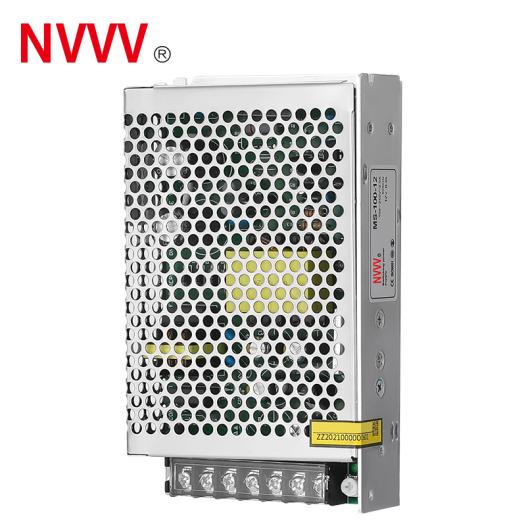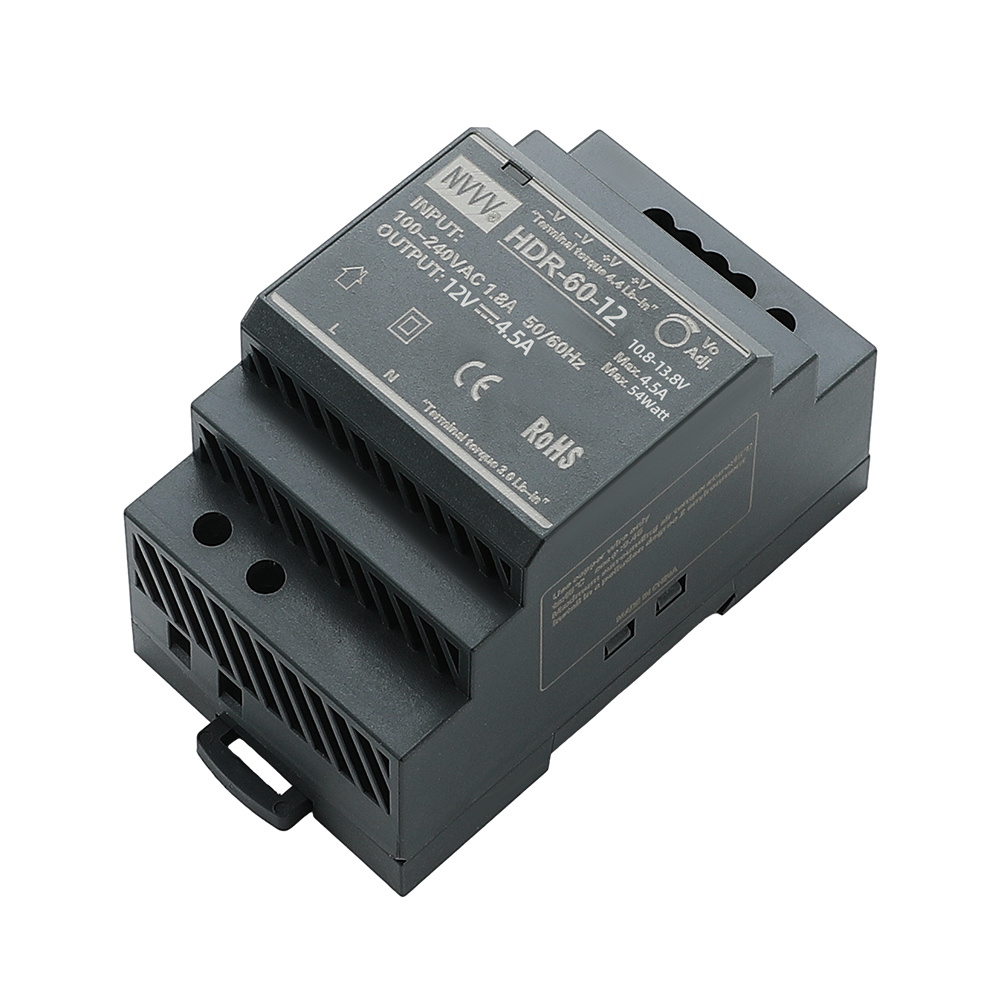How much do you know about the mysterious face of switching power supply?
With the rapid development of science and technology, we have higher and higher requirements for the performance and stability of electronic devices. Have you ever thought about how important the power supply that drives these devices is? Whether it is an efficient computer, a reliable server, or a portable consumer electronic product, it is inseparable from a powerful and stable power supply - a switching power supply (SMPS). In this article, we will take a deep look at the impact of SMPS on computer performance, how to control and manually start SMPS, and why it occupies such an important position in modern electronic devices. Let's unveil the mystery of this key technology and see how it provides a steady stream of power for our digital world.
Why is the switching power supply (SMPS) so important?
The switching power supply (SMPS) occupies a very important position in modern electronic devices. The main reasons include the following aspects:
1. High efficiency
Energy saving:
The switched-mode power supply works through high-frequency switching technology, and the energy conversion efficiency can usually reach more than 80%, and some high-end models can even exceed 90%. This greatly reduces energy loss and saves electricity compared to traditional linear power supplies. This can bring significant energy cost savings for equipment that uses electricity on a large scale, such as data centers and industrial equipment.
Low heat:
High-efficiency energy conversion means less energy is wasted as heat, which reduces the heat dissipation requirements and cooling costs of the device. Low heat output not only extends the life of the power supply and equipment, but also reduces the need for additional cooling systems, making the entire system more economical and environmentally friendly.
2. Small size and light weight
Compact design:
Due to high-frequency conversion technology, the internal components of the SMPS (such as transformers and inductors) can be made smaller. This makes the overall size and weight of the SMPS smaller and lighter, suitable for portable devices and space-constrained application scenarios. For example, portable devices such as laptops, power tools and drones benefit from the miniaturization of SMPS.
Easy to install:
The small size makes it easier for SMPS to be integrated into a variety of electronic devices, whether desktops, laptops or other consumer electronics. The compact size and lightweight design make the installation process simpler, reduce the requirements for internal space of the device, and increase design flexibility.
3. Stable output
High-precision output:
SMPS is able to provide stable output voltage and current to ensure the normal operation of electronic devices. Through the feedback control loop, the SMPS can respond quickly to load changes and keep the output voltage stable. This is especially important for devices that require high-precision power supply, such as medical equipment and high-performance computers.
Adapt to a wide range of inputs:
SMPS can accept a wide range of input voltages (usually between 85V and 265V) to adapt to power supply standards in different regions around the world. This allows the device to work properly under different power grid conditions without replacing the power supply or using additional voltage conversion equipment. This adaptability greatly simplifies the product design and manufacturing process for the global market.
4. Multiple protection functions
Overvoltage protection:
When the output voltage exceeds the set value, the SMPS will automatically power off or adjust the output to prevent damage to the device. This protection mechanism is essential for protecting sensitive electronic equipment and extending its service life.
Overcurrent protection:
When the output current exceeds the set value, the SMPS will limit the current output to prevent damage to the power supply and load equipment. Overcurrent protection not only protects the power supply itself, but also prevents other devices connected to the power supply from being damaged due to excessive current.
Overtemperature protection:
When the power supply temperature is too high, the SMPS will automatically shut down or reduce the frequency to prevent overheating damage. This is very important for equipment that runs at high load for a long time, such as servers and industrial control equipment, to ensure that it can still operate stably in a high temperature environment.
5. Widely used
Computers and servers:
SMPS is an important part of the power supply of computers and servers, ensuring their stable operation. Modern data centers use SMPS extensively to provide reliable and efficient power supply, ensure the continuous operation of servers and the safe storage of data.
Communication equipment:
In communication equipment such as routers and switches, SMPS provides stable power support to ensure the stability and reliability of data transmission. With the popularization of 5G networks and IoT devices, the importance of SMPS in communication equipment is more prominent.
Industrial equipment:
In automation equipment, robots and other industrial applications, the high efficiency and stability of SMPS are key. The industrial environment has extremely high requirements for the reliability and durability of power supply, and SMPS can meet these requirements to ensure the continuous operation of production lines and automation equipment.
Consumer electronics:
SMPS is the core part of power management in equipment such as TVs, stereos, and household appliances. Modern home devices have higher and higher requirements for power supply. SMPS provides efficient and stable power supply solutions, making family life more convenient and comfortable.
6. Environmental protection and sustainable development
Energy efficiency:
Efficient SMPS helps reduce overall energy consumption and meets the requirements of modern environmental protection and sustainable development. With the global emphasis on environmental protection, power supplies with high energy efficiency have become the mainstream choice in the market, promoting the development of green technology.
Compliance with standards:
Many SMPS designs comply with international energy efficiency standards (such as 80 PLUS certification), promoting the efficiency of global energy use. These standards require not only high efficiency, but also environmental protection requirements during manufacturing and use, and reduce negative impacts on the environment.
In summary, switching power supplies (SMPS) play a key role in modern electronic devices. Its high efficiency, small size, light weight, stable output, multiple protection functions and wide range of applications make it the preferred solution for power supply of electronic devices. With the advancement of technology, SMPS will continue to play an important role in improving equipment performance, energy saving and environmental protection. Choosing a high-quality SMPS can not only improve the performance and reliability of the equipment, but also contribute to sustainable development.
How to control a switching power supply (SMPS)?
Controlling a switching power supply (SMPS) can be achieved in a variety of ways, depending on the specific application and the design of the SMPS. Here are some common control methods:
Method 1: Control by power switch
Most desktop computer SMPSs have a physical switch that can manually turn the power on or off. Usually, this switch is located on the back of the power supply.
Method 2: Control via motherboard
The computer motherboard controls the SMPS via power control signals (such as PS_ON#). The power button on the motherboard sends a signal to the power supply to turn it on or off.
Method 3: Control via software
Some advanced SMPS support software control, such as adjusting the power mode (such as energy saving mode, high performance mode) through the motherboard BIOS settings or dedicated software.
Method 4: Control via remote control or remote control
Some industrial and server-grade SMPS support control via remote control or remote control interfaces (such as RS232, Ethernet).
How to manually turn on a switch mode power supply (SMPS)?
Manually turning on an SMPS usually means forcing the power supply to start without the motherboard (such as when testing or repairing). Here are the detailed steps:
Step 1: Prepare tools
A wire or paper clip (well insulated).
Step 2: Find the PS_ON# pin
Disconnect the power supply from the motherboard and find the 24-pin or 20-pin ATX power connector.
Find the green PS_ON# pin (usually pin 16) on the ATX power connector.
Step 3: Short the PS_ON# pin and the ground wire
Insert one end of the wire or paper clip into the green PS_ON# pin and the other end into any black ground pin (usually pin 15 or pin 17).
Step 4: Power on
Plug the power plug into the socket and turn on the power switch.
If the power supply fan starts to rotate, it means that the power supply has started.
Note:
Make sure that the power supply is turned off during operation to avoid the risk of electric shock.
Be careful when operating and do not short other pins to prevent damage to the power supply or equipment.
Through the above steps, you can manually turn on the SMPS and make it work without the motherboard. This is very useful when testing whether the power supply is working properly.
Conclusion
As our demand for technological products continues to increase, the role played by the switching power supply (SMPS) has become more and more indispensable. By understanding its impact on computer performance, how to effectively control and manually start it, and its important role in various devices, we can not only make better use of existing devices, but also lay a solid foundation for future technological innovation. SMPS is not just a power supply, but also a powerful pillar behind modern electronic devices. I hope that through this article, you can have a deeper understanding of SMPS and realize its great value in our daily life and work. Let us look forward to this technology bringing us more surprises and possibilities in the future.









